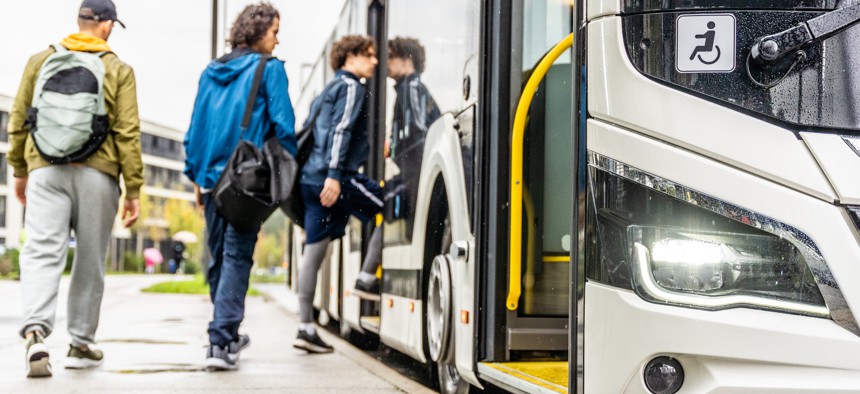Virginia Gives Its Transit Agencies Access to Planning Software

vm/GettyImages
The software helps agencies find gaps in their transportation networks and understand where service can be added or refined. It can also analyze demographic data to ensure that service is as equitable as possible.
Every public transit agency in Virginia can now access planning software to help them develop new routes, change existing ones or add on-demand service.
The Virginia Department of Rail and Public Transportation last week announced a partnership with transit technology company Via that will give the commonwealth’s more than 40 transit agencies access to the company’s Remix planning tool.
Remix helps transit agencies find gaps in their transportation networks and understand where service can be added or refined, whether that’s with fixed route service, on-demand or paratransit service. The software can also analyze demographic data to ensure that public transit service is as equitable as possible, a criteria for applying for federal grants to defray some of the cost.
The tool would have cost the department $500,000, but funding from the Federal Transit Administration offset 80% of that cost, said Jennifer DeBruhl, the agency’s director. With a variety of transit agencies responsible for transportation in areas from dense urban to suburban and rural communities, the use of more tech-driven planning tools to improve transit options can make a significant difference in residents’ daily lives, regardless of where they live.
“It’s access to jobs, education and health care,” she said. “Transit is really important in all regions of the commonwealth; it just looks different in different parts of the state.”
The software enables agencies to, for example, draw an extension to a bus route, then add desired scheduling and frequency. Remix then provides an estimate of how much that extension will cost the agency and how many buses would be required, in addition to socioeconomic data on those impacted, how many more people can access the service and how many jobs are accessible on that route. DeBruhl said it thus “provides a lot of data to drive decision-making.”
Transit planning has always tried to be data-driven, DeBruhl said, but technology has made that effort so much easier. Inconsistent data across agencies made it challenging for the statewide agency to lead a planning effort. But with everyone on the same platform and with data more consistent, everything becomes less siloed, she said.
“It enables us to take that bird's eye view from the state level, to look at accessibility gaps, needs, how those things tie in to economic development and congestion mitigation and other goals of the commonwealth in making investments in transportation,” DeBruhl said.
Remix also allows planners to communicate directly with one another and leave comments on specific plans or proposals. That means “everyone's on the same sheet of planning music,” said Eric Gardiner, Via’s director of East Coast partnerships. The public can also comment on those plans through the tool, he said, with the platform providing a “new element of collaboration.”
DeBruhl said this tool represents DRPT’s first statewide technology procurement and could serve as a model for other statewide contracts in the future. She also said it will give planners across Virginia insight into which agencies really take advantage of the tool in their communities, and in time could make agencies’ strategic plans “more effective.”
This is not the first partnership between Via and the Department of Rail and Public Transportation. Already, the company provides on-demand microtransit routing service for Wise and Gloucester Counties, while its software powers paratransit services in Alexandria, Hampton Roads, Roanoke County and Williamsburg.
The statewide partnership comes on the heels of the Transit Equity and Modernization Study, which the department undertook after lawmakers called for a directed the agency to complete a transit needs assessment in Virginia. The study advocated for consistent data collection, management and reporting across transit agencies.






